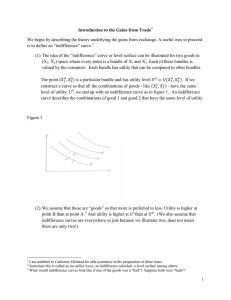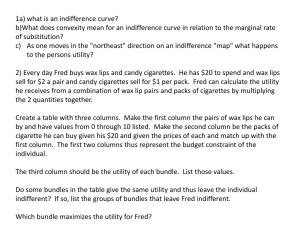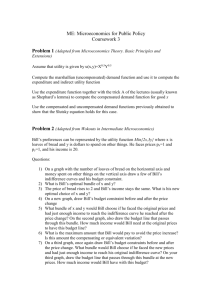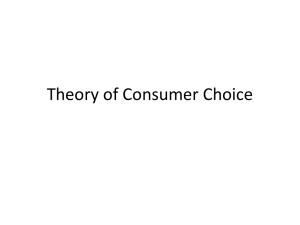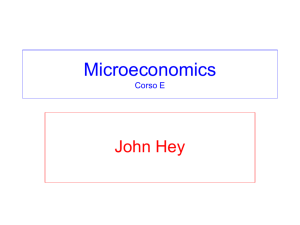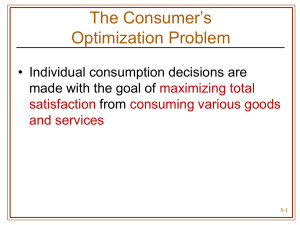Homework Assignment 3
advertisement
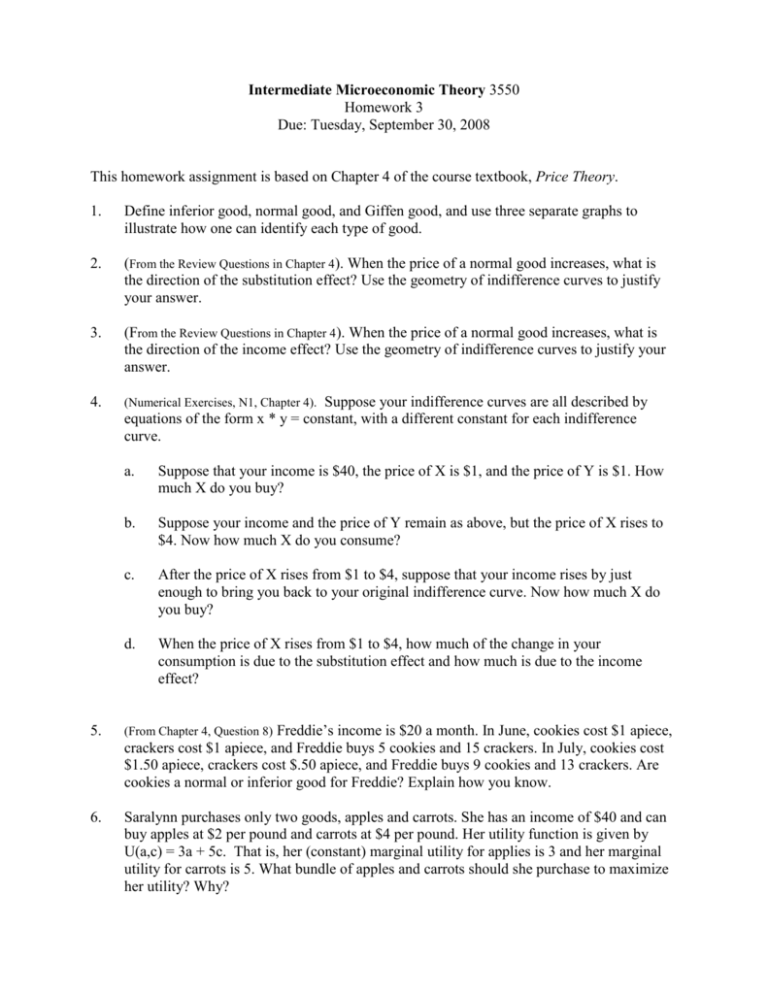
Intermediate Microeconomic Theory 3550 Homework 3 Due: Tuesday, September 30, 2008 This homework assignment is based on Chapter 4 of the course textbook, Price Theory. 1. Define inferior good, normal good, and Giffen good, and use three separate graphs to illustrate how one can identify each type of good. 2. (From the Review Questions in Chapter 4). When the price of a normal good increases, what is the direction of the substitution effect? Use the geometry of indifference curves to justify your answer. 3. (From the Review Questions in Chapter 4). When the price of a normal good increases, what is the direction of the income effect? Use the geometry of indifference curves to justify your answer. 4. (Numerical Exercises, N1, Chapter 4). Suppose your indifference curves are all described by equations of the form x * y = constant, with a different constant for each indifference curve. a. Suppose that your income is $40, the price of X is $1, and the price of Y is $1. How much X do you buy? b. Suppose your income and the price of Y remain as above, but the price of X rises to $4. Now how much X do you consume? c. After the price of X rises from $1 to $4, suppose that your income rises by just enough to bring you back to your original indifference curve. Now how much X do you buy? d. When the price of X rises from $1 to $4, how much of the change in your consumption is due to the substitution effect and how much is due to the income effect? Freddie’s income is $20 a month. In June, cookies cost $1 apiece, crackers cost $1 apiece, and Freddie buys 5 cookies and 15 crackers. In July, cookies cost $1.50 apiece, crackers cost $.50 apiece, and Freddie buys 9 cookies and 13 crackers. Are cookies a normal or inferior good for Freddie? Explain how you know. 5. (From Chapter 4, Question 8) 6. Saralynn purchases only two goods, apples and carrots. She has an income of $40 and can buy apples at $2 per pound and carrots at $4 per pound. Her utility function is given by U(a,c) = 3a + 5c. That is, her (constant) marginal utility for applies is 3 and her marginal utility for carrots is 5. What bundle of apples and carrots should she purchase to maximize her utility? Why? 7. Consider the following: you probably prefer a grade of B in a course to a grade of C, and you probably prefer an A to a B. For all students, high grades are good, but high grades are not given away. You have to work long and hard to get an A. When you consider the work you have to do to get an A, you might prefer to do less work and get a B. For example, Leah might be capable of earning an A in her intermediate microeconomic theory class if she applies herself and works hard. But she might choose not to do so. She might view the time and effort she has to expend to get the A too high a price to pay. Does it follow that if Leah does not spend the time and effort to get an A that she is behaving unreasonably? Explain using consumer theory. 8. A well-known saying is “you can never have too much of a good thing.” Considering the above rationale, is it possible to have too much of a good thing? Explain your reasoning. 9. Linda loves buying shoes and going out to dance. Her utility function for pairs of shoes, S, and the number of times she goes dancing per month, D, is U(S,D) = 2SD. It costs Linda $50 to buy a new pair of shoes or to spend an evening out dancing. Assume that she has $500 to spend on clothing and dancing. a. What is the equation for Linda’s budget line? Draw the budget line (with D on the vertical axis), and label the slope and intercepts. b. What is Linda’s marginal rate of substitution? Explain your answer. c. Solve mathematically for Linda’s optimal bundle. Then show how to determine this bundle in a diagram using indifference curves and a budget line.

